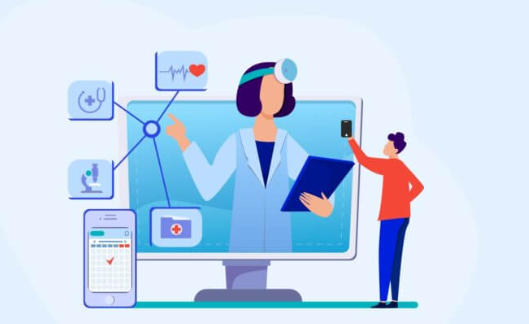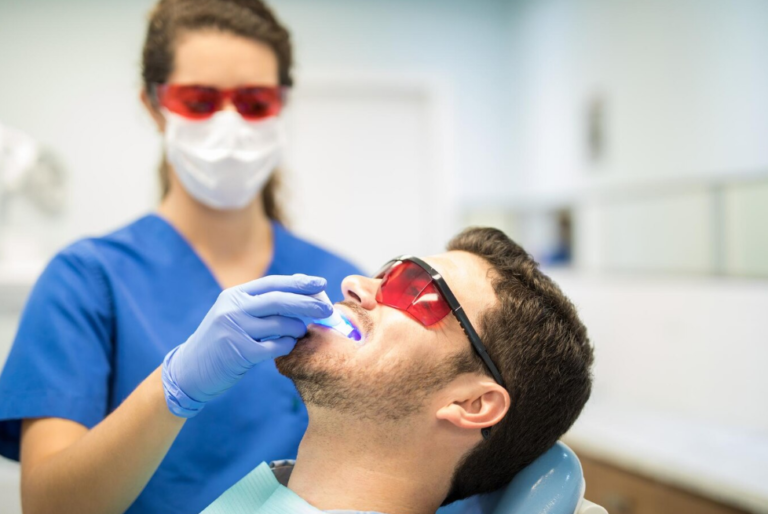Why Most Telemedicine Apps Fail Compliance Audits (And How to Build One That Passes)
Telemedicine is reshaping modern healthcare, offering patients access to consultations, prescriptions, and ongoing care without leaving their homes. The convenience and scalability of these platforms have made them attractive to startups and established providers alike. Yet, behind the surge in adoption lies a significant challenge: many telemedicine applications fail compliance audits. These failures are rarely isolated mistakes. They often stem from foundational weaknesses in security, data governance, and operational planning that surface under regulatory scrutiny. Understanding these pitfalls is critical for building a platform that can stand up to the demanding standards of healthcare compliance frameworks.
The Most Common Points of Audit Failure
Compliance audits evaluate whether a telemedicine app protects patient data and operates within the strict guidelines set by laws such as HIPAA, HITECH, and state-level telehealth regulations. In practice, several recurring issues cause platforms to fall short:
Inconsistent Data Encryption
Many apps only partially encrypt data. While transmission channels may be secured with TLS, data at rest in storage buckets, backups, or video consultation archives often remain vulnerable. Poor key management practices, reliance on default cloud configurations, or skipping end-to-end encryption for messaging features frequently result in audit findings.
Weak Access Control Mechanisms
Healthcare data access is supposed to be tightly restricted. Audit reports regularly highlight flaws such as overbroad permissions, lack of role-based segmentation, missing multi-factor authentication, and inadequate session management. These lapses open pathways for unauthorised viewing or misuse of sensitive information.
Insufficient Documentation and Policy Gaps
Technical safeguards alone are not enough to satisfy auditors. Written policies and procedural evidence are examined closely. Missing or outdated Business Associate Agreements, incomplete breach notification plans, lack of signed vendor compliance statements, or absence of employee training logs often derail an otherwise technically sound platform.
Third-Party Services Without Compliance Guarantees
Video conferencing tools, analytics packages, and cloud storage providers frequently form part of a telemedicine app’s infrastructure. If these vendors lack HIPAA compliance certifications or refuse to sign BAAs, the primary platform inherits non-compliance risk. Many companies fail audits because integrations were chosen for speed or cost, without vetting regulatory alignment.
Poor Logging and Monitoring Practices
Audit success depends on proving accountability. Applications that do not maintain immutable logs of every access event, data modification, and system interaction cannot demonstrate that PHI (Protected Health Information) is properly safeguarded. The absence of automated alerts for anomalies is also a frequent audit failure point.
How Compliance Audits Work
Auditors conduct detailed assessments that extend beyond the app’s technical features. They trace how patient data flows through the system, examine where it is stored, and verify whether encryption and key management policies meet standards. Access permissions are tested to ensure that users see only the data relevant to their roles.
Vendor relationships are reviewed, with signed Business Associate Agreements and certifications expected for every external service that handles PHI. Organisational procedures such as incident response planning, patient consent handling, and employee training records are also examined. Finally, auditors look for immutable logs that capture every interaction with PHI and verify that monitoring systems are active and reliable.
An app can perform well functionally but still fail an audit if documentation is incomplete, vendor compliance is unclear, or traceability is weak. Passing requires both secure technology and disciplined operational controls.
Building a Telemedicine App That Stands Up to Audits
Avoiding these failures requires more than a feature checklist. It demands a compliance-focused mindset throughout the development lifecycle, from architecture planning to vendor management and operational governance.
Start with a Regulatory Blueprint
Before development begins, engage compliance specialists to map out every relevant standard—HIPAA, HITECH, SOC 2 Type II, GDPR (if applicable), and state-specific telehealth rules. Define how data will flow, where it will reside, who will access it, and how it will be protected. This blueprint should inform technology choices and architectural decisions rather than being retrofitted later.
Build Security into the Core Architecture
Encryption should be applied universally: data in transit via TLS 1.3+, data at rest with AES-256, and tokenisation or pseudonymization where possible. Role-based access controls with strict privilege separation are essential, as are enforced multi-factor authentication and session timeouts. Continuous vulnerability scanning and penetration testing validate these safeguards before an auditor ever reviews them.
Vet Every Vendor in the Chain
Every external service touching PHI must demonstrate compliance and sign BAAs. This includes hosting providers, video call APIs, storage solutions, and third-party plug-ins. Maintain a vendor compliance register and conduct regular reviews to ensure continued alignment as services evolve.
Maintain Detailed, Verifiable Documentation
Policies, procedures, and evidence logs carry equal weight to secure code. Keep updated breach response protocols, privacy statements, and training records. Every data flow, access rule, and incident management process should be documented in a way that demonstrates control and accountability during audits.
Implement Comprehensive Logging and Monitoring
Immutable logs that capture every access event and data change are critical. Secure them against tampering and supplement them with automated anomaly detection. This provides a provable record of system activity, reassuring auditors and strengthening the overall security posture.
Conduct Internal Pre-Audits
Waiting for an official audit to find gaps is costly. Simulated audits, often conducted by independent consultants, identify missing safeguards and weak documentation early. These exercises prepare both the platform and its teams for real-world compliance checks.
The Long-Term Advantage of Compliance-Driven Design
Platforms that treat compliance as an afterthought face recurring audit failures, delayed launches, and fractured trust with providers and patients. Applications built with regulatory requirements woven into their architecture, vendor ecosystem, and operating procedures pass audits consistently and scale more easily across jurisdictions. Hospitals and insurers are more willing to adopt solutions that demonstrate verifiable security and compliance maturity, creating long-term business value.
A strong compliance framework also reduces the risk of breaches, legal disputes, and costly product recalls. In a market where patient trust is essential, being able to demonstrate robust safeguards is not only a regulatory necessity but a strategic advantage. Companies that invest in these capabilities from the start position themselves for long-term resilience and leadership in digital healthcare.
Listing 5 Recognised Firms Delivering HIPAA-Compliant Telemedicine Applications in the USA
1. GeekyAnts (USA)
GeekyAnts provides custom telemedicine app development services designed to meet HIPAA and HITECH compliance standards for U.S. healthcare providers. Their offerings include secure video consultations, encrypted patient data handling, prescription management, and protected chat systems. The team has built reusable telehealth frameworks, such as their GeekCare solution, enabling faster deployment while maintaining strong regulatory safeguards. They focus on security-driven architecture with end-to-end encryption, role-based access, and detailed audit logging features.
GeekyAnts also advises clients on vendor selection and infrastructure setup to avoid third-party compliance gaps. Their experience helps startups and enterprises design platforms that are technically sound and prepared for rigorous compliance audits.
Clutch Rating: 4.9 / 5 (100+ reviews)
Address: 315 Montgomery Street, 9th & 10th Floors, San Francisco, CA, 94104, USA
Phone: +1 845 534 6825
Email: info@geekyants.com
Website: www.geekyants.com/en-us
See Also: How Startups Use Tech to Disrupt Industries
2. Simpalm (USA)
Simpalm is a Washington D.C.–based mobile and web development company with expertise in building secure healthcare and telemedicine applications. Their projects focus on HIPAA-compliant communication channels, encrypted data storage, and protected video conferencing for patient-doctor interactions. They offer full-cycle development, including UI/UX design tailored to healthcare workflows and backend systems integrated with EMRs and third-party APIs.
Simpalm’s teams have delivered applications for U.S. clinics and health tech startups that passed security and compliance reviews. Their structured approach combines agile development with regular quality and compliance audits during the build process. This allows clients to mitigate risks before facing external regulatory checks.
Clutch Rating: 4.7 / 5 (60+ reviews)
Address: 1201 Seven Locks Road, Suite 360, Rockville, MD, 20854, USA
Phone: +1 301 825 5351
3. Dogtown Media (USA)
Dogtown Media, headquartered in Los Angeles, develops mHealth and telemedicine solutions for U.S. hospitals, clinics, and digital health startups. Their portfolio includes patient-facing mobile apps with HIPAA-compliant data handling, secure messaging, and remote monitoring features. The company focuses on integrating privacy-focused backend systems, ensuring strong encryption, access controls, and logging for accountability. They collaborate with healthcare providers to meet state and federal telehealth regulations during the architecture and vendor selection phases.
Dogtown Media also offers post-launch support for compliance audits and security updates, ensuring long-term reliability. Their process emphasises building trustworthy telemedicine platforms aligned with U.S. healthcare standards.
Clutch Rating: 4.6 / 5 (55+ reviews)
Address: 633 W 5th Street, 26th Floor, Los Angeles, CA, 90071, USA
Phone: +1 888 785 7543
Conclusion: Compliance Is the Competitive Edge in Telemedicine
The telemedicine landscape is rapidly expanding, but success in this space hinges not just on innovation or usability—it hinges on compliance readiness. As regulatory frameworks tighten and patient expectations for privacy increase, apps that fail to meet HIPAA and related standards face serious consequences: failed audits, legal exposure, and lost trust.
Building a telemedicine platform that stands up to compliance audits requires more than patching in security features after the fact. It demands a regulatory-first mindset, thoughtful vendor vetting, robust operational controls, and complete documentation—starting from day one.
For startups and healthcare providers alike, working with partners who understand the nuances of compliance isn’t just a safeguard—it’s a growth enabler. Choosing the right development team today sets the stage for scalable, secure, and audit-ready telemedicine solutions tomorrow.






